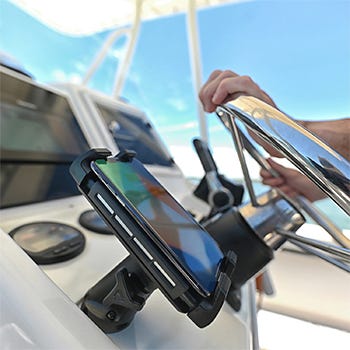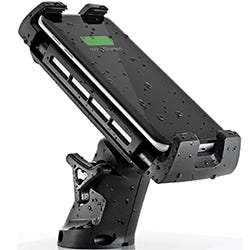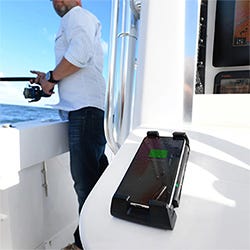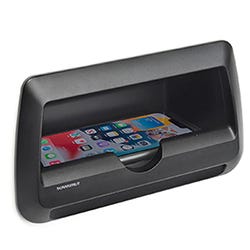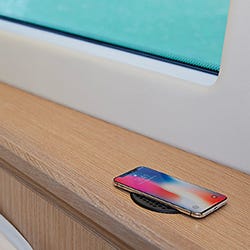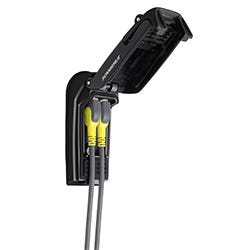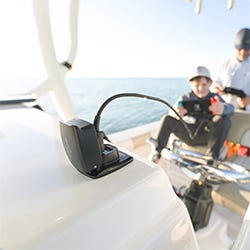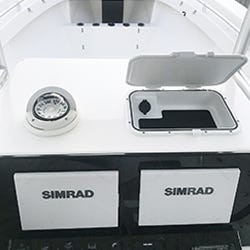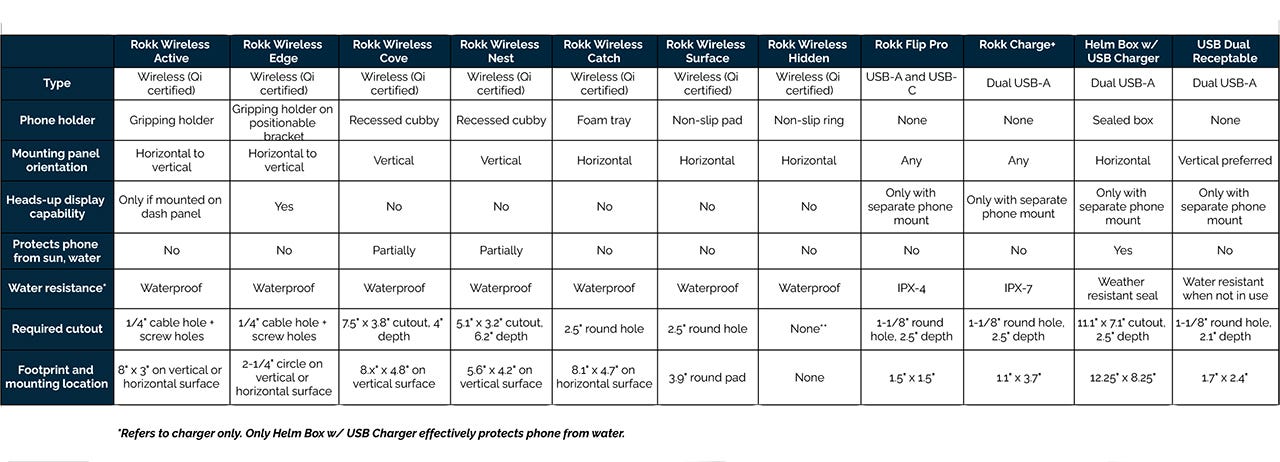

The capacity to charge portable electronics is a convenience bordering on a practical necessity on a boat these days. Everyone who comes aboard your boat will have a phone along.
Contents
More Than Aesthetics
Even more significantly, we’re increasingly likely to use smart phones and tablets as navigation and fishing aides. The gizmos will need juice.
Sure, you can plug a basic car charger into that 12V cigarette lighter-style outlet on your dash, but in the past several years a number of clever, marine-specific phone and device chargers have hit the market, promising dependable waterproof performance, integrated phone holders and even wireless on-board charging.
This new crop of boat phone chargers doesn’t represent just an aesthetic upgrade; it’s a real step forward in keeping devices charged and safe on board.
Charger Installation
For most phone chargers, installation on a boat is a straightforward task well within the capabilities of most DIYers:
- Disconnect the battery
- Cut a rough opening
- Run 18-gauge marine-grade wire (or 16 gauge for long runs) to your boat’s panel with a 5-amp fuse inline on the positive wire
- Wire and install the unit
- Wire to source and restore power
Wireless Charger Installation
Some wireless chargers won’t even need the rough opening. You may spend more time kicking around the which-and-where of this upgrade than doing the install itself. There are a few things to kick around:
- What type of charging connections do you want?
- What mounting are available at the location to which you want to deliver power?
- How will the wiring route from unit to power?
- Do you want to be able to see the screen while charging?
Another consideration of using a phone on a boat is the possibility of overheating. Let your phone sit in the sun and it may be shut down just when you want it.
Some charging options, both wired and wireless, essentially add charging to storage, creating a cooler space that will help keep your phone functioning on a hot day.
Wired vs. Wireless Chargers
Charging options come in two varieties: USB connectors — mostly the familiar USB 2.0 Type A female ports that most of the world has plugged into for the last 20 years but also — and wireless charging stations. Inductive charging (aka wireless charging) has been on the market for a decade, and is an increasingly common feature in phones. The catch is that while virtually any device will plug into a USB port to charge.
There are still a lot of devices that don’t yet charge wirelessly.
Stick-on converters are available to allow virtually any phone to be charged wireless, but you may well want at least one USB port somewhere on your boat, even if your primary charging option is a wireless station.
Wireless chargers are still the more expensive option, and, as always, everything runs faster over wire. Wireless chargers charge a device more slowly, taking up to 50% longer.
Types of Wireless Chargers for Boats
The advantages of wireless charging are obvious. No wires. No charging cable to forget, wear out, be in the way, drop overboard or knock your beer over when a plugged-in phone gets grabbed for a photo. On a boat, and especially around the helm, a charging cable is clutter that’s good to get out of the way.
Mount Chargers
The Rokk Wireless Edge adds waterproof wireless charging to a phone holder with adaptable mounting options to squeeze maximum utility from minimum footprint.
The fully positional mount lets you position your phone exactly as you want for a heads-up display on both flat and vertical surface mounts. Self-aligning, high-grip jaws securely hold phones from 4.7 to 6.8 inches tall.
The ROKK Wireless Active is the same charger configured for a fixed surface mount, which lets you mount the charger flat on your console or in an unobtrusive location elsewhere on your boat.
Depending on mounting location, you may be able to see your phone screen while driving, but if you need to interact with your phone while underway, the Edge is a better choice.
Pocket-Like Chargers
The ROKK Wireless Cove and Wireless Nest are more like open glove boxes with built-in chargers, making it effortless to grab your phone for a quick photo and guaranteeing it will be fully charged whenever needed.
The Wireless Cove is also available with an internal LED lighted option that can be wired to match the color of the courtesy lights on the rest of your boat.
Surface Chargers
The most inconspicuous wireless chargers are the ROKK Hidden Fast Charger and Surface Fast Charge, which turn a flat surface into a charging station without dedicating that surface solely to charging —that is, no surface mounted hardware at all.
The Surface Fast Charger is topped with a high-friction pad to help hold your phone in place on the water. The Hidden Fast Charger mounts on the underside of a surface, no cutting required, and uses a high friction ring applied to the exterior above the charger to hold devices.
Wired Chargers for Boats
As mentioned, even if you’re adding a wireless charger, you’re likely to decide a USB port is also going to be useful. With a small footprint, low profile and minimal orientation restrictions, USB ports have a lot of installation flexibility. Any four square inches you can run power to is a candidate location. One key feature of a USB charger for a boat is a cover that keeps water out of the charger.
The Rokk Flip Pro Rapid USB Charger uses a spring-loaded cover that snaps tight and provides an IPX4 waterproof rating when closed and access to both USB-A and USB-C ports when opened.
The Rokk Charge+ goes a step farther and provides IPX6 water resistance while closed. Its cover can be closed even while devices are plugged in; the charger cables exit through an opening at the bottom. Both ports of the Charge+ are USB-A.
Finally, a recessed helm box with integrated charger port can keep your phone sealed from the elements during charging. Ideal for mounting on the top surface of a console, it needs just under 12 inches by 8 inches of surface space and 2.5 inches of clearance behind to install.
Two USB-A ports, padded interior, and a weather resistant seal give your phone as much security as it is going to get on the water.

